+44 75754 30035 help@rapidassignmenthelp.co.uk
offer
🎁Special Offer 🎁 Discounts - Up to 55% OFF!
🎁Special Offer 🎁 Discounts - Up to 55% OFF!
This Brand Management Assignment has introduced branding of the organization that can define its explanation about any company. Different kinds of models and theories have been discussed regarding brand management. It has evaluated collaborative management criteria among the customers that manage at both domestic and international levels. Brand performance has been evaluated to discuss the main criteria of the organization. Different techniques have been measured to define the brand management that works as the colligative performance of the criteria.
Get expert Assignment Help UK on brand management theories, collaborative strategies, and brand performance evaluation to understand how companies build value and loyalty domestically and internationally.
Brand Management is a function that is a tool of marketing criteria for using techniques for increasing the value of a product line. Brand management is effective for enabling products and prices to build customer values. Loyal customers have built positive associations with brands and create brand images of awareness criteria. As per the views of Paul (2019), a strategic plan is developed for understanding the brand value that requires a comprehensive criterion to understand its brand. The strategic plan is developed to maintain brand equity it has required for understanding the brand value and target market and mitigate the overall mission of the company. Effective and positive brand management has helped to build a good profile for the company. Brand managers have ensured initiative for the brand or product at crates and awareness. The main uses of packaging, price, format lettering, associated colors, logo, and so on are effective to get more advantage of brand value.
Figure 1: Brand Management
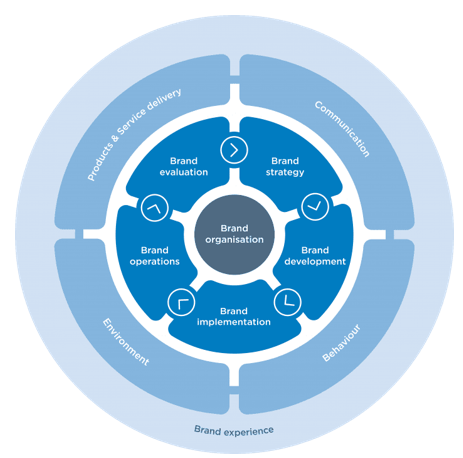
Brand management has referred to gaining the company's value that recognizes to enable choice among consumers. It has compared to developing price value among consumers that compared to evaluating the lower pros point of the organization. As per the opinion of the author of Bilan et al. (2019), the main concept of management has been adopted by markets and companies that connect products and customers. Customer preferences have needed more references that mitigate the good overall impact of the brand value. It has helped to increase business that mitigates b brands, which is a b marketing value of the strategies. It has helped to establish the company's product and brand. New customers have acquired brand loyalty which is increasing customers in the market. Brand management helps to evaluate the brand performance that improves changing times (Schmidt et al. 2021). Customer preference has needed to decrease the brand value that increases business and advocates its brands. It is one of the most important marketing strategies for helping to increase the value of the company.
It can be defined by an example of brand management that GEICO Insurance has used for advertising companies (Heding et al. 2020). Similarly, Coca-Cola has featured different cultures and races that are popular among familiar consumers. Multiple models have undertaken the of Ford that recognize to develop the strategy of their band management. Brand Management is a technique that increases the values of brands, services, and products. Brand strategy has been built to provide a framework that will communicate in the marketplace. The most important part of brand management has maintained proper brand management. It is involved to make sure of each piece. Organizational message, logo, and have reinforced their brand that intends to recognize the organizational criteria.
Proper collaboration has involved two layers and these are the structural layers and relational layers. Structural latter is equipped to organize interaction and collaboration that serves as a solid structure for realizing the main core value of the organization. On the other side, a relational layer is needed to create business partners that involve motivation and mutual respect. As per the views of Keller and Swaminathan (2019), it is the best ability that plays and aligns with the company or determines collaboration outcomes. Collaboration is working to secure purposes that increase product complexity for the business. It is increasing product complexity for managing and alignment with external and internal factors. It has helped to deny the value of rein factors such as speed, quality, innovation, sustainability, and risk. The important thing is to produce R&D that interacts with other suppliers (Kumar and Nayak, 2019). These collaborations have handled the optimal focus of the business partners that perfectly approach them.
There are many theories relating to band management and its techniques and these are preferred to discuss the following criteria. “Theory of Brand Loyalty” has explained the relationship between customer psychology and other brands of the company (Miliopoulou, 2021). The positive attitude has explained the brand criteria in three fern aspects and these are emotional attachment, behavioral attachment, and brand evaluation. This aspect is related to emotional attachment to the customer to maintain brand loyalty. A very positive criterion will be inclined for buying a product. It will dislike or like products that are inclined to check the company's products. As per the opinion of the author of Osorio et al. (2020), “The branding theory" has provided proper guidance for brand management including business standards. It is making people aware of the brand. It tried to establish a relationship between customers and their growth criteria. These have tried to reach no components with their functions of brand development.
Get assistance from our PROFESSIONAL ASSIGNMENT WRITERS to receive 100% assured AI-free and high-quality documents on time, ensuring an A+ grade in all subjects.
“The Value-based Brand Theory” has explained the band that is inundated to build the value of long customer criteria (Anagnostopoulo et al. 2018). Successful criteria depend on the delivery of the product to customers. The theory has argued about building long customer value and success to build customer value. It had argued to contradict customer services that defect to maintain competitors and said brand lie song customer services. Brand management has been used to increase techniques that perceive the main value of the brand line or product line of the industry. Effective brand management has enabled customers to establish and build customer value that is associated with maintaining a b awareness of the brands.
Figure 2: Value-based Brand Theory
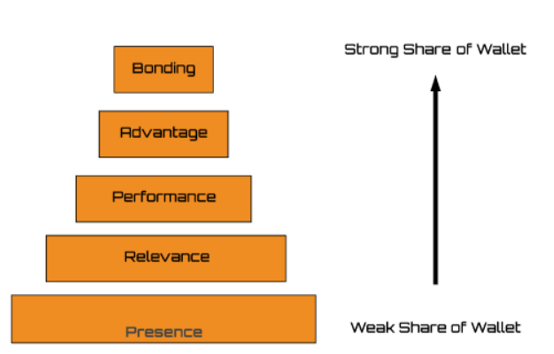
“The McKinsey 7-S Model” has developed and consulted about developing brand management. It is a strategy for including business units and the 7Ss are maintaining the same strategy including strategy structure style, skills, shared values, and style (Kumar and Nayak, 2019). The model is based on organizational criteria for good performance and this element is based on multiple reinforcements. The model has been used to understand the areas that develop an organizational value for changing the restructuring types of the organizational system. As per the views of Zumitzavan (2020), the collaborative approach has organized teamwork that refers to organizing the brand of the company. The company had promoted the main requirement among employees to mitigate and complete products and projects. The collaboration involved skills and ideas to achieve the company's goals. The collaboration is working for more productivity that gives employee value to the organization.
The model has helped to organize the brand management of the company. It can organize the developing protocol that seeks to develop the marketing criteria. The model is helping for processing a guideline that illustrates the main function of the company. The developing function has been evaluated to connect with the audience. As per the views of Paul (2019), it has helped to increase profit margins and develop brand loyalty.
Figure 3: Keller’s customers-based equity model
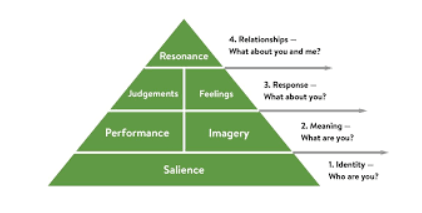
Customer value has developed after using the model. The development equity has maintained to use the model that is needed to illustrate the main function. “The customer-based brand equity model” has a marketing gilded profession to build popular brands (Buhalis and Park, 2021). It has helped to connect with audiences and increase markets that connect with audiences and increase profit margins. Brand equity and brand loyalty have increased to refer to and recognize specific brands.
Brand performance has measured the outcomes of branding efforts and it is a process to measure it. The key performance is tracking these indicators such as traffic, imprisons, and comparing engagement criteria. Most of the company has determined the weakness and strengths of the brand. The first metric of brand performance is an awareness that memes about the brand criteria (Babin and Hulland, 2019). Therefore, it is coming to back large brand awareness that everyone knows about the company. The KPIs are searching for the customs value that maintains brand awareness for mentoring and promoting the videos. Brand awareness is spontaneous that might post video mentoring without any promotions. These have promoted mentoring and recommended services or products.
Figure 4: Evaluation of brand performance
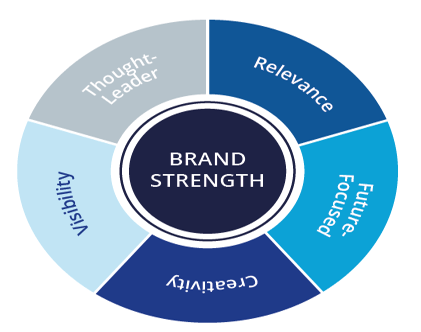
The second awareness to measure brand management is direct traffic and organic. Overall traffic has come to step through different websites. According to Iyer et al. (2018), it can look at well-known companies in the market that have direct visits of 10 to 20%. Another way to measure brand awareness is to search for brand s. It is a good indicator for the recognition of a brand in the market that measures brand awareness of the marketing efforts. It has recognized brand performance that will help to focus maximum impact on the marketing criteria. Consideration is another metric that recognizes data for purchasing intent. It has been found to look into data collection methods such as marketing messages with interaction demographics, website engagement, and previous purchase of the developing criteria.
It is the best way for measuring purchasing and consideration criteria that look at the overall view of the company. It has related to buying direct purchase products and brands alone sell their product in different places. The company will apply different metrics for booking visitors on different pages. As per the views of Polfu (2021), it is clicking to certain interests that will show interested criteria of the brand services or product. Strong brand value is an important factor that measures marketing metrics. It is an important factor to recognize brand direction that remembers about brand direction. The audience is remembering the company's logo that conveys the image, copy, and colors of the services or products in the company. A successful brand is reducing costs around the company that needs little attention. The brand theory has referred to using a strategic cost that acts as an individual tactic that founded company growth. The core principle has positioned and messaged about the smarty growth of the branding. It can defy the many subsets of the burning criteria.
There are two approaches to portfolio management including “Active Portfolio Management Strategy and Passive Portfolio Management Strategy” (Greco and Polli, 2020). It has relied too much on the particular style that can generate returns for the beneficiary of the market. Active management of the portfolio has made a better return for taking decisions that followed to investigate contact approaches. Active managers have undervalued the selling criteria that climbed to the norm about the circumstances. It has evolved to analyze and determine the main cost of the relationship that is potential for the factor, the active manager has shuns to develop a market hypothesis and is interested to rely on giving support of the organization. As per the views of Heding et al. (2020), active managers have diversified investments and active portfolio management. The main issues have developed to organize the management skills. It should find out the necessary criteria that investigate the bringing criteria of the good gains protocol.
Brand management has referred to the use and increase techniques that perceived the product value over time. It is developing and maintaining a good relationship with its target market. It is a crucial factor for ensuring business test satyrs to mind about consumer criteria. As per the views of Waller (2020), it is an important factor to create a brand story. These have connected with humans for creating a more emotional connection with them. Humans have drawn stories that make them feel connected with others. It can create an emotional connection with the audience and create a b brand value. Consumers have wanted to relate a brand image that is appealing to them. Consumer trust has ensured the stories are appealing to them. It can help to build connections and maintain a b image among them. These techniques have helped to organize the brand value that is needed to develop its organizational context with them.
The main advantage of brand management is selling unique products and differentiating between brand products that mitigate its competitors. Customers have been overwhelmed with the option of taking competitors. Customers were overwhelmed to take options that made sense in different situations. The unique selling product has wanted to know about the business differently from the rest. As per the opinion of the author Anagnostopoulos et al. (2018), it should play a strength that tells consumers to brand uniquely for their valuable criteria. Effective board management techniques have included criteria for measuring success. The evolution has helped to develop future work that includes marketing camping. Social media has followed and implemented the social impact of the marketing strategy.
Figure 5: Brand Value Techniques
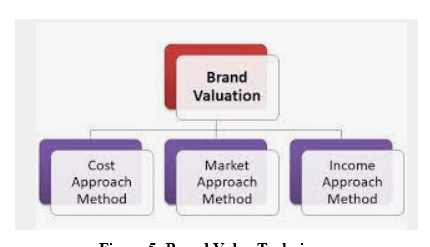
On the other hand, a well-known brand has recognized low brand equity. For example, an established national restaurant is familiar with local restaurants. It has just opened to knowledge about brand equity that develops the developing function of the criteria. Markets have used the customer base model that has rated positive experiences to encourage more bard awareness and recognize its recommendation. As per the views of Kernstock and Powell (2018), the model has been accomplished to focus on key elements, which are value, performance, trust, commitment, and social image. Value has referred to palace about specific brand or service that influences about willing to pay for it. The customer-based performance has been explored to mitigate services or products that fulfill customer experiences. Trust has been assessed to consider brand trustworthy criteria that wanted to purchase about the social image. The model has been analyzed to perceive the social image and another online image in the future.
Conclusion
From the above discussion, it has been concluded that brand management allows a brand to drive and achieve true consumer connection effectively. On the other side, the brand has been built to create brand value with other companies that have custody of them. Therefore, it is a vital criterion for understanding brand value with their customers. This Brand Management Assignment Sample highlights how brand management has evolved to emphasize customers who prefer to evaluate a brand's value around them. Consumers have understood consumer criteria that give a brand criterion and its value to their lives. The brand has become a part of gaining acceptance among customers and lasting loyalty. Brand management has given an opportunity that ensures both visual and intangible aspects. The brand has aligned to be clear and consistent among customers. It has been known to gather experiences that are known to give a factor among them.
Reference
Introduction Improve your academic performance with Assignment Helper, covering essential topics like safeguarding, healthcare...View and Download
Introduction: Approaches To Organizing People Receive professional Assignment Help UK on organizational design, analyzing...View and Download
Introduction to Developing Using and Organising Resources in a Specialist Area Assignment Task 1 Explaining the purpose of...View and Download
Accounting for Business Essay Investment analysis may be defined as a tool which investors undertake for examining, assessing...View and Download
Introduction Get free samples written by our Top-Notch subject experts for taking assignment help uk from Rapid...View and Download
1. Introduction - Budgeting & Cost Classification for Financial Decision Making Financial management refers to the process...View and Download
